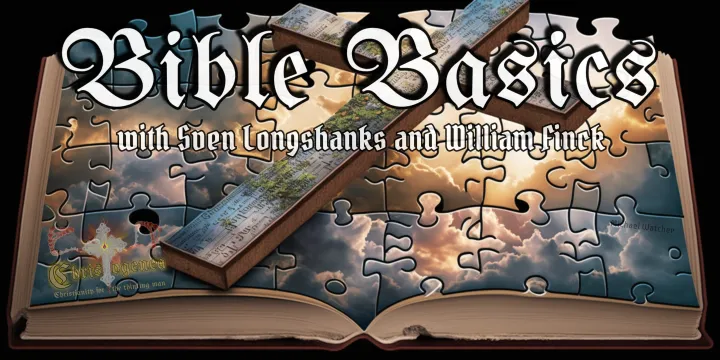Bible Basics - Part 2

William Finck and Sven Longshanks of Radio Aryan discuss the historicity of Genesis, the Genesis chapter 10 table of nations, and some of the archaeological evidence which supports the truths of our Bibles, and more...
NEW: try this link in a podcast catcher app or on iTunes: https://christogenea.org/podcasts/mp3feed
William Finck's opening notes are found below:
In our last discussion we briefly contrasted the Creation account of Scripture to the ancient pagan creation accounts of Mesopotamia. In summary, the pagan accounts describe a world created in chaos. In that world, gods mingle with mortals and race, or kind, does not matter so men are not even judged under that consideration. Rather, men of great valor or strength are worshiped regardless of their origin. This is quite the opposite of the Biblical creation account.
In the Bible, everything was created by God in a specific order, and was to be kept in that order, “kind after kind”. When men mingled with gods, or as we call them from a Biblical perspective, “fallen angels”, it is sin regardless of the prowess, strength or ability of the offspring. We suffer in the world of today because of that sin on the part of the earliest men of our race, in a struggle which the Bible described as the inevitable result.
The pagan account does not conflict with the Biblical account. In the Enoch literature we see that the rebellion of the fallen angels is the confusion of “kind after kind”, the mixing together of themselves with all sorts of animal-kind, resulting in monsters and demons and all sorts of unnatural creatures. That certainly is chaos. So the tale of Tiamat the dragon creating the world out of chaos certainly is Biblical, as we shall see.
In Matthew chapter 13, Christ explained that as soon as the Wheat were planted, representing the White Adamic race, that the devil came along and planted tares among the Wheat. Saying this, He professed that He came to reveal things kept secret from the foundation of the world. So if we want to understand Genesis, we must correlate it with the parables and Revelation of Jesus Christ.
In Revelation chapter 12, we are given a brief account of the rebellion of the angels, and the leader of that rebellion is called “the great dragon... that old serpent... the Devil, and Satan”. He and his followers were cast out of “heaven”, where their place was no longer found. So in Genesis, Adam is created, and the serpent is already there to undermine his purpose. The serpent also represents a “tree of the knowledge of good and evil”, and trees in Scripture are very often used allegorically to represent races.
Ostensibly, since the God of the Bible only took credit for having created the White Adamic man, the non-White races are branches on this other tree, which has its origin in the chaos and confusion of the rebellion of the fallen angels and their experimenting with cross-breeding species which is described in the Enoch literature. Their fate is the same as the “devil and his angels”, as we later learn from Christ in the gospel, in Matthew chapter 25.
There is only one race, that of Adam, which is described as having been created by God in Genesis, and after Cain killed his brother, he went off to find company with another race in the land of Nod, a word which means wandering. The concept of wandering is a frequent allegory for sin, so it is not a stretch to imagine that the world outside of the garden of God was already in a state of sin – that chaos described in the pagan creation literature.
The first proof of all of this is in the historical identity of the Genesis 10 nations, as it can be ascertained through both history and archaeology that they were all originally White.
[Here we discuss some of the main points of my paper, The Race of Genesis 10]





 Please click here for our mailing list sign-up page.
Please click here for our mailing list sign-up page.







